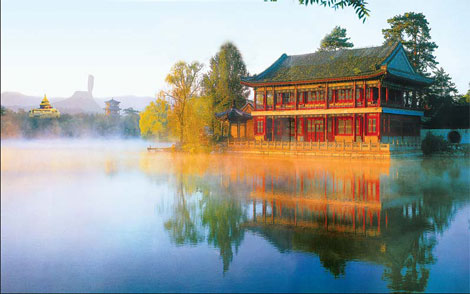|
The Chengde Mountain Resort and its outlying temples are a World Heritage Site. Built between 1703 and 1792, it was the summer resort of the Qing Dynasty emperors. The Chengde Resort consists of a palace complex, a vast park area consisting of lakes, pavilions, causeways, bridges and a number of Tibetan Buddhist and Han Chinese temples in the surrounding area.
 |
| Chengde Mountain Resort |
3. Vibrant Hebei
In the north of Hebei province, the city of Tangshan has a long and at times heartbreaking history, but today it is a modern metro area emphasizing sustainable development.
In 1976, a devastating earthquake took the lives of an estimated 270,000 people and virtually destroyed a century of industrial progress in the city.
In the 30 years following the quake, the people of Tangshan built a modern city from the ruins through 10 years of reconstruction, 10 years of revitalization and another 10 years of new development.
Tangshan today is one of the cradles of China's modern industry. The city created many firsts in China, including the first mechanized mining of coal and the first locomotive.
The city is now promoting new industries and a greener economy. The Caofeidian industrial area is one of the first demonstration projects for a green economy that promotes reuse along the industrial chain, including recycling wastes and water. All its seven major industries are required to meet strict environmental standards.
Tangshan was awarded an international honor by the United Nations and the Dubai International Award for best practices to improve the living environment for its reconstruction after the earthquake and for the ecological efforts in its coal-producing zone. It also received an award as the National Garden City of China.
|